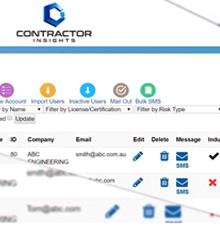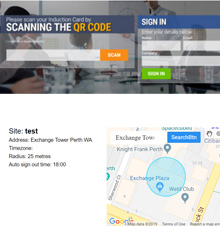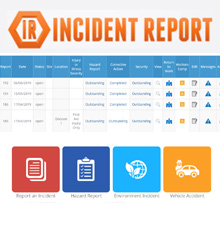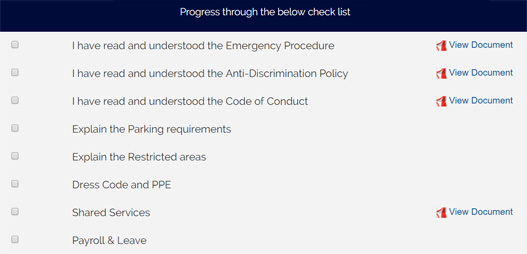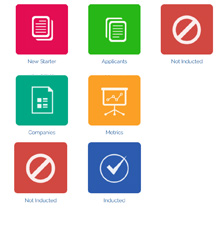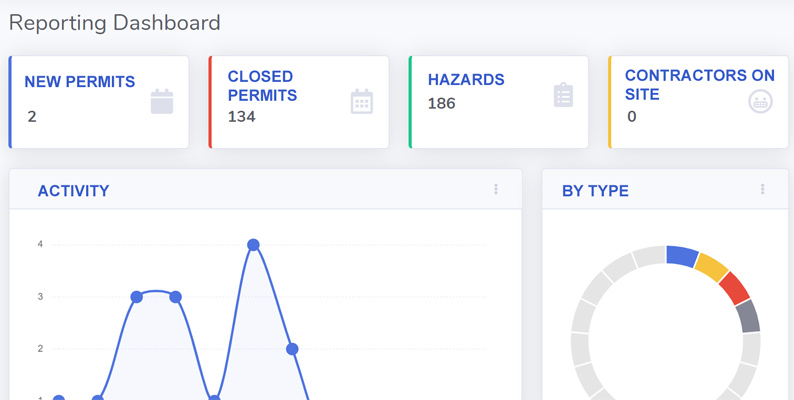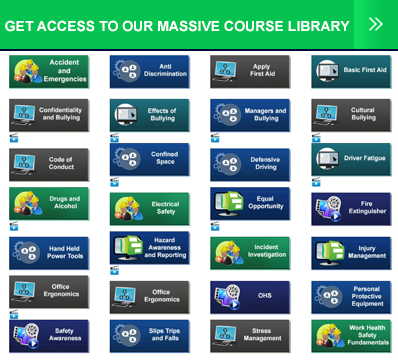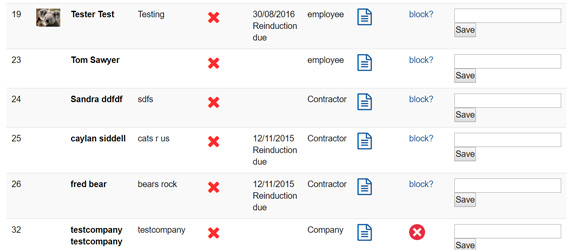Safety Scorecard: Guide, Template, Form and Examples
Online Induction >> Safety ScorecardPublished 13/09/2025
 If you're in the business of keeping your workplace safe and sound, then you've probably heard about safety scorecards. But what exactly are they, and what should you include in one?
Here we dive into the nitty-gritty details of safety scorecards and giving you the lowdown on everything you need to know about how to create a top-notch safety scorecard that will keep your team safe and your business running smoothly.
If you're in the business of keeping your workplace safe and sound, then you've probably heard about safety scorecards. But what exactly are they, and what should you include in one?
Here we dive into the nitty-gritty details of safety scorecards and giving you the lowdown on everything you need to know about how to create a top-notch safety scorecard that will keep your team safe and your business running smoothly.
First off, what is a safety scorecard? Simply put, it's a tool that helps you measure and track your company's safety performance over time. It's like a report card for your safety efforts - showing you where you're excelling and where there might be room for improvement. But what should actually go into this magical document? We'll cover all that and more as we break down the essential components that make up a comprehensive safety scorecard.
Now, when it comes to creating a kick-butt safety scorecard, there are some key elements that shouldn't be overlooked. From tracking incident rates to analyzing near-misses and conducting regular safety audits - we've got the inside scoop on what needs to be included in your scorecard arsenal. Trust us, once you've got these bases covered, you'll be well on your way to fostering a culture of safety excellence within your organization.
Here are some tips on how to make it shine. Think eye-catching visuals, easy-to-understand data visualization, and maybe even a sprinkle of gamification to keep things interesting.
Guide and Examples for what to include in a safety scorecard
 First up, let's talk about hazard identification. A top-notch safety scorecard form should provide a clear and comprehensive way to document potential hazards in the workplace. This includes everything from physical hazards like machinery and equipment to environmental factors such as noise levels or air quality. By effectively capturing these hazards on the form, organizations can take proactive measures to mitigate risks and keep their employees safe and sound.
First up, let's talk about hazard identification. A top-notch safety scorecard form should provide a clear and comprehensive way to document potential hazards in the workplace. This includes everything from physical hazards like machinery and equipment to environmental factors such as noise levels or air quality. By effectively capturing these hazards on the form, organizations can take proactive measures to mitigate risks and keep their employees safe and sound.
Next on our list is incident reporting. A well-designed safety scorecard form will include sections for recording any incidents or near-misses that occur on-site. This not only helps in tracking trends and patterns but also empowers organizations to take swift action to prevent similar incidents from happening in the future. After all, learning from past mistakes is key to improving overall workplace safety.
Moving right along, we come to the critical area of training and certification records. It's essential for a safety scorecard form to have provisions for documenting employee training and certification status. This ensures that all workers are adequately trained for their specific roles and have the necessary qualifications to handle potentially risky tasks safely and effectively.
Another key element of a comprehensive safety scorecard form is compliance tracking. Staying on top of regulatory requirements and industry standards is no small feat, but with the right tracking mechanisms in place on the scorecard form, organizations can ensure they are meeting all necessary legal obligations while also keeping their workforce protected.
Last but certainly not least, let's not forget about corrective actions. A robust safety scorecard form should provide an organized way to track any corrective actions taken in response to identified hazards or incidents. This could range from implementing new safety protocols to conducting equipment maintenance or repairs - whatever it takes to address potential risks head-on.
Here we dive into these elements further on a safety scorecard:
- Incident Rates: to track the number of accidents, injuries, or illnesses that occur in your workplace over a specified period. This can include minor and major incident rates.
- Lost Time Injury Frequency Rate (LTIFR): for the number of lost time injuries that occur per 1 million hours worked.
- Near Misses: where there might be incidents that could have resulted in injury or damage such as a close call. Tracking these can provide insight into potential risk factors.
- Safety Training: to measure the number of employees who have received safety training, and the regularity of these training sessions.
- Safety Audits: for keeping track of the number of scheduled and completed safety audits.
- Hazard Identification: to record the number of hazards identified and addressed.
- Employee Participation: for measuring the level of employee participation in safety activities, including meetings, training, safety drills etc.
- Corrective Actions: the actions taken in response to identified hazards or incidents.
- Compliance Rate: for tracking how often your organization complies with safety regulations and requirements.
- A Culture of Safety: to evaluate the company's commitment and attitude towards safety. This might include a measure of employee's perception of safety in the organization through a safety survey.
The Importance of a Safety Scorecard for workplace safety
Creating a comprehensive safety scorecard is essential for any organization looking to maintain a safe and secure work environment. A well-structured safety scorecard not only helps in tracking and measuring safety performance, but also serves as a valuable tool for identifying areas of improvement and implementing effective safety measures. In this guide, we will explore the key components that should be included in a safety scorecard, along with real-life examples to provide a clear understanding of how to effectively communicate safety metrics and goals.When developing a safety scorecard, it's crucial to include relevant leading and lagging indicators that reflect the organization's commitment to safety. Leading indicators provide proactive insights into potential risks and hazards, while lagging indicators offer retrospective data on incidents and accidents. By incorporating both types of indicators into the scorecard, organizations can gain a holistic view of their safety performance and take proactive steps to prevent future incidents. Additionally, including benchmarks and targets in the scorecard enables organizations to set clear goals for improving safety performance and track their progress over time.
Tailoring the scorecard to align with industry standards, regulatory requirements, and internal policies ensures that it accurately reflects the unique risks and challenges faced by the organization. Furthermore, utilizing visual aids such as charts, graphs, and color-coded metrics can enhance the accessibility and readability of the scorecard, making it easier for stakeholders at all levels to interpret and act upon the information presented.



